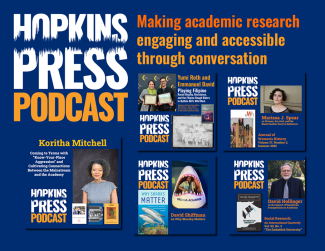
Johns Hopkins UniversityEst. 1876
America’s First Research University
Healthy Aging for Everyone: Guides for Different Journeys

Aging is a universal experience, but it isn’t one-size-fits-all. For many, midlife and beyond bring new questions about health, identity, and purpose. While the physical changes of menopause may affect some, others may face different challenges as they navigate later life. Whatever your journey, we all can benefit from reliable, research-based guidance.
Two new books—The Savvy Woman’s Guide to Menopause by Dr. Julia Edelman and A Man’s Guide to Healthy Aging by Edward H. Thompson, Jr., and Lenard W. Kaye—offer clear, compassionate guides for thriving in these later stages of life with confidence. Read together, they provide a broader vision of what it means to age well, encouraging people to approach midlife and later years as opportunities for growth, vitality, and connection.
The Savvy Woman's Guide to Menopause
The transition of menopause—whether experienced personally or through supporting a loved one—comes with a wide range of physical, mental, and emotional changes. Dr. Julia Edelman draws on her 30 years of experience as a gynecologist and menopause clinician to provide clarity, compassion, and evidence-based solutions.
In The Savvy Woman’s Guide to Menopause, readers will find practical strategies for managing common symptoms such as hot flashes, sleep disturbances, mood changes, and memory lapses. Edelman addresses preventive health, from reducing the risks of cancer and cardiovascular disease to protecting bone health and managing diabetes risk.
Importantly, the book acknowledges how cultural, racial, and demographic factors shape the experience of menopause and postmenopause, offering a personalized approach that speaks to diverse needs. By including insights into hormonal and non-hormonal treatments, alternative remedies, and precision medicine, Edelman empowers readers to make informed choices that best suit their bodies and lifestyles.
Whether you’re preparing for perimenopause, well into postmenopause, or supporting someone you care about, this guide offers a trusted companion—helping people embrace midlife not as an ending but as a new beginning.

A Man's Guide to Healthy Aging
For those navigating later life, new challenges and opportunities emerge. In A Man’s Guide to Healthy Aging, Edward H. Thompson, Jr., and Lenard W. Kaye reframe aging not as decline but as an opportunity to live with vitality, purpose, and connection.
Covering everything from physical activity and nutrition to sexual health, cognitive changes, and late-life financial planning, the book offers a comprehensive look at the realities of later-life health. The authors encourage readers to take charge of their well-being by staying socially engaged, pursuing new careers or hobbies post-retirement, and maintaining strong support networks.
New sections address modern trends that affect aging today, including the impacts of the COVID-19 pandemic, the growing role of telemedicine, and changes in Medicare and Medicaid coverage. The book also explores how to push back against ageism and outdated stereotypes, choosing instead to live later years with confidence and purpose.
While centered on men’s experiences, A Man’s Guide to Healthy Aging also provides valuable insights for anyone seeking to better understand and support aging family members, partners, or friends.

A Shared Vision of Aging Well
Taken together, these books underscore that aging isn’t something to fear or avoid. It’s a stage of life that can be embraced with preparation, resilience, and optimism. For some, that may mean facing the realities of menopause with knowledge and support. For others, it may mean redefining what vitality, health, and connection look like in later years.
By reading these guides side by side, people and their families can deepen their understanding of each other’s experiences, sparking conversations that lead to healthier, more connected lives.


